Forum Replies Created
-
AuthorPosts
-
::
In my humble opinion you can probably purchase truffles from any distributor as long as you make sure that they are ripe and of the right species. Once you receive your truffles, smell and color should tell you about the ripeness. Then you should take a piece of each truffle and have it DNA tested as well as spore checked by a speciality lab to confirm the species, especially if you are planning to work with black truffles.
For the lab I have been working with Inga Meadows of North Carolina State University, but there are other labs able to do this work.
::Australians recommend for T. melanosporym to use black + white fabric. Black for obscurity and white to prevent over heating. In our orchard with T. melanosporum we used a layer of white fabric covered with lime gravel. In our orchard weeds are over taking the mats in the fourth season. We chose 4’x4′ mats as opposed to full strip for cost saving reasons. We were quite happy with our setup.
Considerations to ponder. I heard that continuous mats are quite effrctive and you can place the irrigation under, but they also tend to become freeways for voles…
In your cost estimate, you should not only include cost of material and labor to install, but cost of removal and disposal. This is quite significant.
I can’t speak to T. aestivum…
::I am a believer in the establishment of an ecosystem and the cover crop is a big part of it as it supports a whole world of organisms in the soil and in the orchard. I believe that such system will be more resilient and less inclined to major pest invasion. I am maybe naive, only time will tell.
This is why in our orchard we favore regenerative practices and we have never used any herbicides or pesticides. We try to promote the growth of beneficial organisms control the other less beneficial.
::For the past 2 years we have been using the Davis Ventage Go Pro2 weather station with an EnviroMonitor Gateway and 2 nodes each connected to 60 cm Sentek drill and drop sensors to monitor soil moisture content (% water) and temperature every 10 cm down to 60 cm. The weather station is fully autonomous, with no requirements for power or internet connection.
I subscribe to the WeatherLink 15 minute update so I get data report every 15 minutes through the cellular network. I also set up my system to import all the weather data into a spreadsheet for analysis and historical records.
Because of the high variability of the soil type in our site, it has been very challenging to reliably translate the water content into water potential data. This year we have added METER Teros 21 sensors to the EnviroMonitor nodes to remove the soil type from the equation.
Finally, we have a pressure switch sensor to record when irrigation is turned on and off.
We have experienced a few ups and down but Davis technical support has been very diligent and responsive in helping us solve the problems.
This solution was quite pricey but was essential for our situation. We have two nodes placed at opposite side of our soil type spectrum (loamy clay – sandy loam) so that we can have a better understanding of the soil condition. We are not leaving on the truffière so the weather station and the sensor are our eyes to help us decide when to turn on irrigation remotely.
Also you can’t improve what you can’t measure. We are storing the data with the intention that when we start producing truffles we will be able to to conduct irrigation pattern tests and see the impact on production.
Because of cost we have limited the number of nodes, but once we will start producing we probably add a few more nodes.
We would get a similar setup without any hesitation, but would probably change a couple things. We would probably not use the Sentek sensors again, or if we would really want to monitor the multiple depth, we would take only one of the shorter (30 cm) sensor to save money, and use Teros 21 sensor in the other locations. The other change would be that instead of a pressure switch sensor, we would use a pressure gage sensor (the switch tells you when water is on or off, the gage gives you pressure readings) so that we could better assess the flow at the sprinkler to have a better measure of the amount of water given to each tree (we have been struggling with reconciling theoretical flows with measured flows).
::Elise, tractor size is important to consider. When using earth engaging implements it is important to have a bigger tractor as it allows you to use wider implements saving you time and trips up and down the rows. However you also have to consider weight. Compaction is your enemy in the truffière so you need to make sure you are using the proper tires, that you limit the use of the tractor as much as you can. One of the use of the tractor could be for mowing, but this year I found that using a zero turn mower to be a significant improvement because of its maneuverability and its light weight. Please view my tractor post in the Equipment Q&A forum and be on the lookout for a zero turn mower review shortly.
Also, consider getting your tractor used. Unlike car you assess the age of a tractor by its hours of use, rather than by its model year. You can find older tractor with few hours for a good discount on Craig’s list.
::We have been studying the topic quite intensively lately. My understanding is that it boils down to what you want, what you are willing to do, and the tree species.
I learn that pruning is not slowing down the tree growth, on the contrary invigorates it. Pruning results in the energy reserve of the tree to be redirected on the remaining buds promoting their growth. So the more you fight with the tree the more it will fight back until it will exhaust its resources.
By reducing the canopy we reduce the amount of leaves, and thus amount of sugar the tree will produce, and thus reducing the sugar available to the truffle. Is this a problem?
We have planted English White Oaks which have a fast growing habit, there is not much we can do about that, so what we will try to do is to redirect that growth in a way that is not closing the canopy. We will NOT top the trees but will reduce them striving in maintaining their good structure with a single leader branch. We will prune the tree following the guidelines as explained in this Master Guardner Class video. Only the future will tell. We will make sure to keep you posted with our results.
::Hello,
I have been using the services of
Inga Meadows
Extension Plant Pathologist – Vegetables & Herbaceous Ornamentals
NC State University Mountain Research Station.Here page with instruction can be found in their blog
She is also part of the Expert Advisory Group and mad a presentation last September on the topic. View Presentation
I have also been recommended the services of
Efren Cazares
Mycology Consultant, PhD
MycoRoots (http://www.mycoroots.com)but have not yet used his services.
::Michael, I don’t have first hand experience, but have discussed the matter with several people with that experience. I short it boils down to education with product in hand. Potential buyers are used to one source and are rarely ready to experiment, however when they are presented with the new product and suggested to try they quickly realize that freshness always trumps origin and in some circumstance may even trump price.
For species other than T. melanosporum and T. magnatum they need to have the opportunity to try for themselves and then they realize that they are not only potential substitute but they become an additional tool in their belt.
::I would think that it would depend on the truffle species. My understanding is that for T. melanosporum requires an open canopy. Other truffle species can handle closed canopy but I would not mix the truffle species in the same orchard.
We have decided to actually plant hedges around the orchard which will use a mixture of shrub, trees and hazelnuts. We may get some production there but we are not counting on it and since the hedge is running east to west, the base of the trees will be exposed to the south … We will need several year to see what happens.
July 18, 2021 at 6:07 pm in reply to: Help with irrigation, yield, and price for business plan #5436::Hello Mike,
Here are my non expert answers. For our business plan we have used 30# per acre of T. melanosporum as an ideal situation target. It is a reasonable, yet not given number. 100# per acre are possible but not to be expected. So your numbers are reasonable to me.
Price of truffles is more complicated. Often high published price are retail price for premium truffles. Only a small proportion of your production will be sold at that price. That percentage will really depend on your ability to market your product.
For irrigation we have opted for inset sprinklers set every 36 feet. The adventage is that the irrigation is out of the way for working the field, it is less subject failure, but the full coverage results in more wasted water (especially at the beginning), more weed growth, less micro control of irrigation and more costly to install. I still think that was a great compromise, especially that we needed a reliable system that would last for many seasons. With the sprinkler system you have to think also in terms of size of water droplets. Big drops may result in excessive compaction. For water cannon you will have to make sure that you remain above the trees and that you have enough pressure and flow to produce the expected coverage.
::@Michael Zablocki, thank you very much for sharing. This is great work! Several expenses I had not counted on my initial model:
- Tree replacement. We have experienced an average of 10% new tree mortality on the first year due to gophers and not surviving transplant. As the trees are getting older that rate drops significantly. We have decided to replace dead trees every year (of which we loose 10%…).
- Gophers: We are not leaving on the farm and had to contend with a severe infestation. In the initial plan we were anticipating to have help on the farm only once we would start producing. Because we need to put a constant pressure on the gopher population and because we could not keep up with a regular trapping schedule we had to resolve hiring a full time help.
- Tractor: We actually found a good used tractor on Craig’s List (Kubota M9000) for $28K. The implements though were quite costly. I would also recommend looking into the purchase of a professional grade zero turn mower.
- Liming: You will find that the amount of lime you will need depends directly to the buffering capacity of your soil. We had to add 40T/acre! In the cost of the lime you need to make sure it the delivered price. For us shipping was 1.5x the cost of the product!
- Production Ration: It looks like you are using data from Australia (starting production in year 5), I have heard of many truffieres that have not started production until much later.
- Inoculum: Are you planning to use truffle traps (Spanish Wells) or to reinoculated your orchard. These can be a significant cost.
- Dogs: Are you planning for having dog(s). There is a significant cost to acquire/train/maintain the dogs. Also if you do like us, wait for the dog, then you would have a cost for dog service to survey your orchard.
These are first thoughts in a random order. Thank you very much for your contribution to the community.
::At this point I did not factor the truffiere senescence. What I call re-inoculation is all the practices to increase the spore bank in the truffiere, truffle traps being one of them. Some argue that in our conditions it is a must for triggering production.
For our first re-inoculation experiment that we conducted last year, we used 4g of truffle per tree as a starting point. I don’t know if this was the optimum quantity (I think we erred on the heavy side) and I would love some feedback from others as well. We’ve conducted our first experiment with re-inoculation on three different rows with different formulas and we will see if it makes a difference. Once we will finalize on the substrate formula we will conduct experiments with the amount of truffles. Too many variables to handle at once.
To the direct cost of fresh truffle and DNA testing you need to add the cost of the substrate, which will depends on your formula, and the cost of labor and maybe the cost of the equipment you would use for the application. This adds up quite rapidly!
::I did plant this mixture last year with various success.
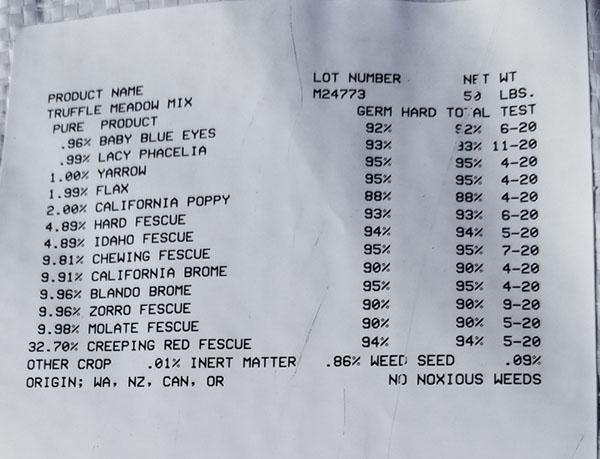
It looks like the grasses did not like it much… The most successful flowers were the Lacy Phacelia and the California Poppy. All the other flowers appeared only anecdotally. To note, this might be a totally different observation next year as some of those plants are biennials or perennials.
The problem with flowers is that they are very expensive, so you will have to hit a compromise. To try to save in cost we have chosen to promote self reseeding. We did is to not mow the center of the lanes until the end of June to give a chance for the cover crop to go to seed.
The challenge with that approach is that it got quite wildly and at the end we were concerned with exposure to wildfires. Toward the end it was also getting hard to work out gopher activity as the growth (including the local volunteer) was over 4′ tall.
The advantage is that it saved us at least two mowing of these areas which resulted in less compaction, less labor and less gas. We have noticed a significant (not measured) increase in bird population and we were very happy to see the multitude of pollinators.
The success of your seed mix is directly correlated with your soil. As you know we have a wide variety of soil type in our orchard and we have witnessed a very diverse plant populations throughout. Going from spots with zero germination to some areas that looked like hundreds of plants were thriving.
As for the question regarding the nitrogen fixing plants I have received mixed feedback. Ground cover is used in “standard” farming to replenish the soil nitrogen level and other nutrients, so to promote better successive crops. My understanding of the use of cover crop in a truffier is different.
We have decided to not include Nitrogen fixing plants, but I don’t have a solid argument for or against. I have read that it could be detrimental for truffle growth if the soil is well irrigated and too rich. There is a THEORY that stipulate that the trees tolerate the “truffle tax” on their sugar because the trees needs the truffle to absorb nutrients and water from the soil and if the soil is too rich then the tree can thrive without the help of the truffles and thus would reject the truffle. However there are other papers showing the importance of soil nutrients in the successful mycorrhiza development. Which throws away the first argument.
Some have argued that the cover crop may even compete with the trees, however I believe that our cultivation practices mitigate that risk. We are growing truffles, not trees. We have seeded the cover crop in the middle of the rows only and 4 feet away from the trees (at least while they are young, later on the brule will take care of this). Because the cover crop is mulched back in place we are not depleting the soil of nutrients and in effect we are increasing the amount of organic matter in the soil and improving carbon fixation.
In the end I have decided to use cover crops for these reasons: Increase biodiversity in the orchard, protect the soil from erosion and direct exposure to the sun, limit compaction of the soil. The increased biodiversity will promote the development of a more resilient and balanced orchard which should result in being more productive. The protection of the soil from the elements will help with the development of the biodiversity all the way to the top soil where the truffles grow. Compaction will be mitigated by both shielding the top soil from the droplets and the roots working the soil texture (this is why it is important to choose species based on their root system as well).
For this year we may decide to adjust the mixture but we will certainly do another round of seeding.
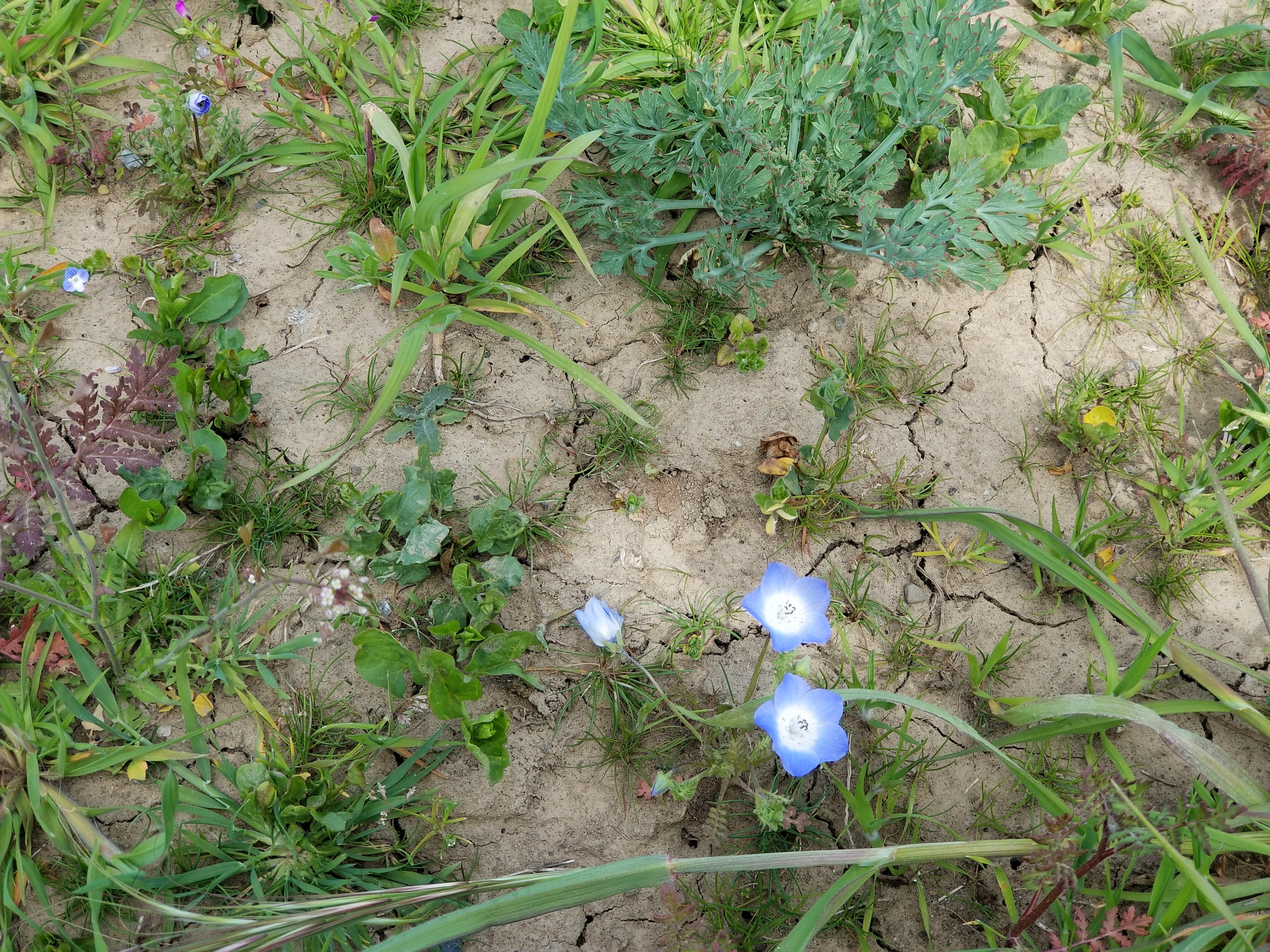
Early spring sparsed germination
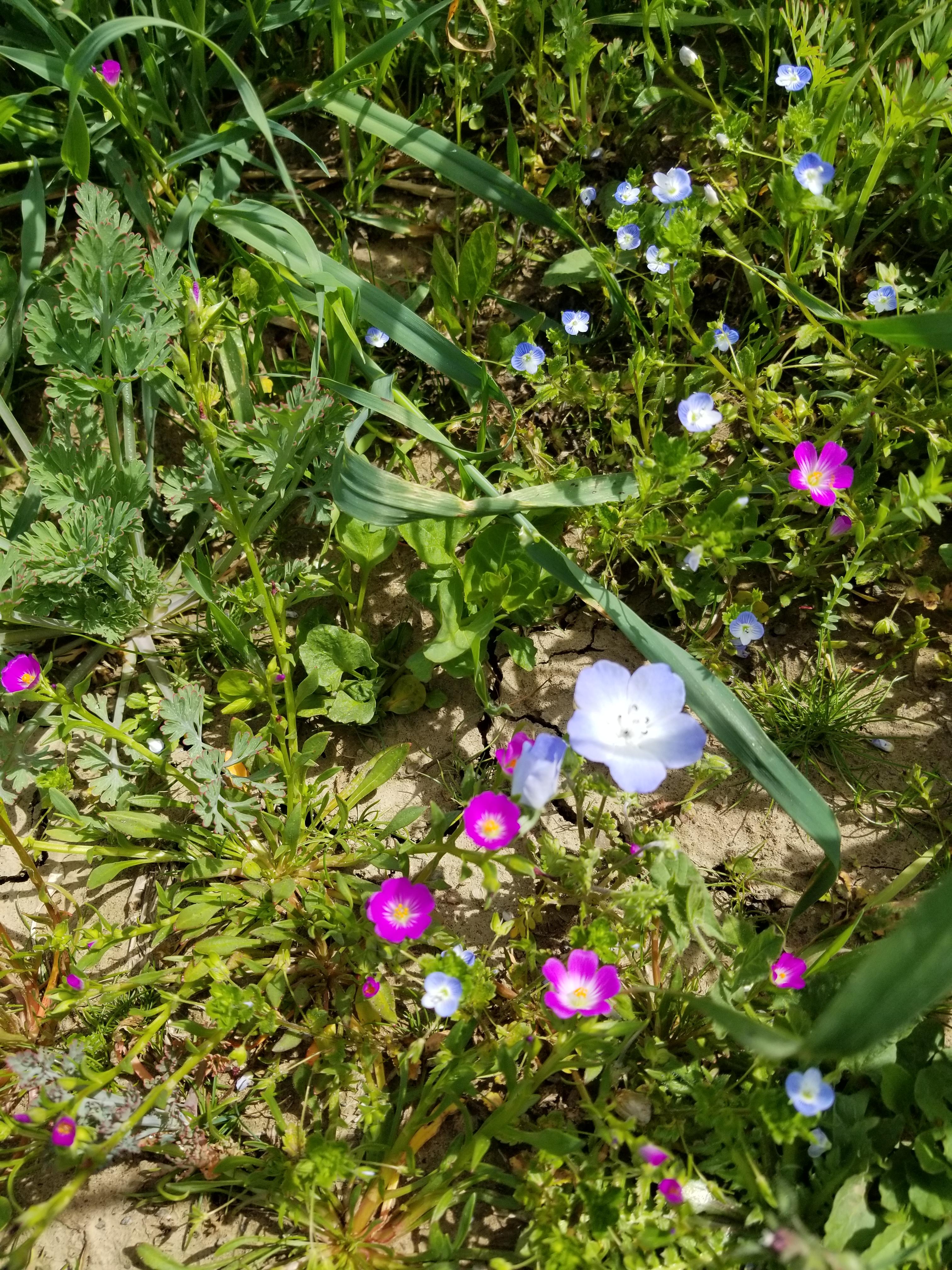
A more dense germination
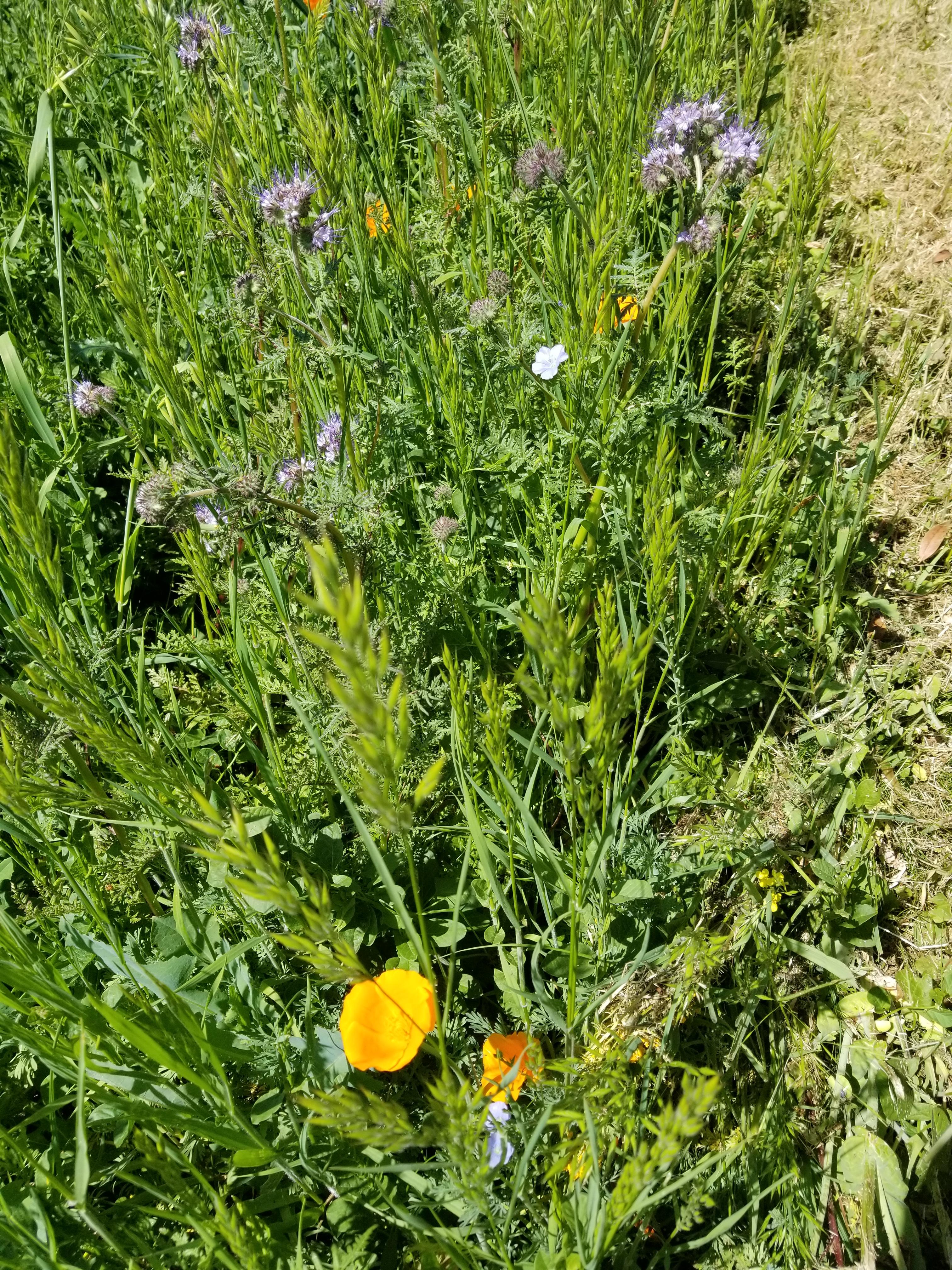
Later on in the season
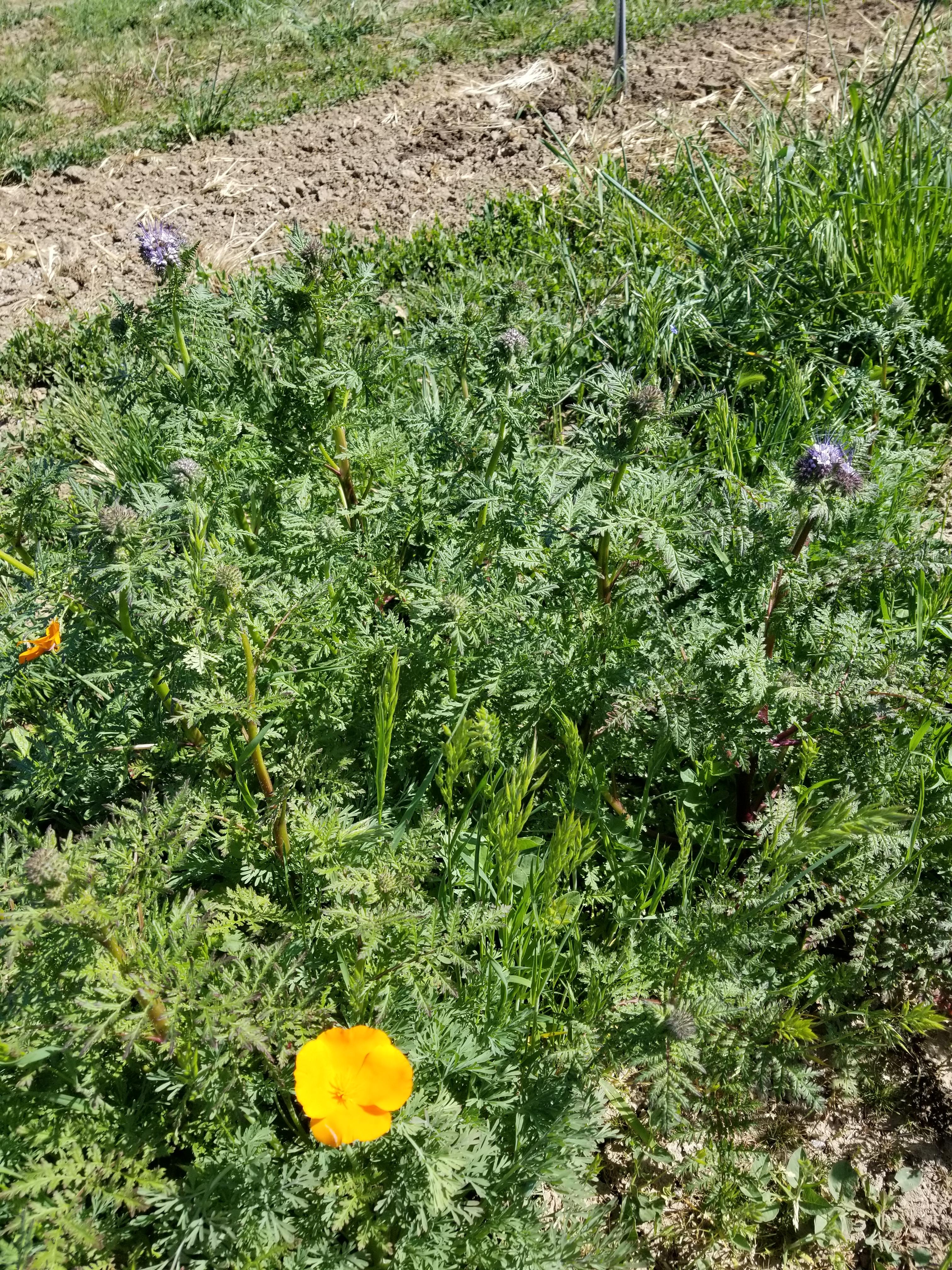
Cover crop in the middle of the rows and soil cultivated in the tree line
::Please keep us posted on the progress for that research. Your pruning strategy will vary significantly depending on the tree species, available equipment and location of your orchard.
On our side we have decided to prune the trees to develop a central leader and keep the tree “aerated”. We mostly have English Oaks (Q. robur) and they are growing fast. Many of our 4 year old trees are past the 20 feet mark. We are pruning to raise the canopy as well. Because we are planted 18′ apart the tree still have lots of room before they touch each other. Because the canopy is quite open we don’t have dark shadows, and we think that because of the increase heat we are experiencing in Lake County (this year 14 days over 100 in July and 10 in August) a little of shade might actually be beneficial. For now we are pruning by hand, but once the tree reach a certain size we probably will prune them mechanically.
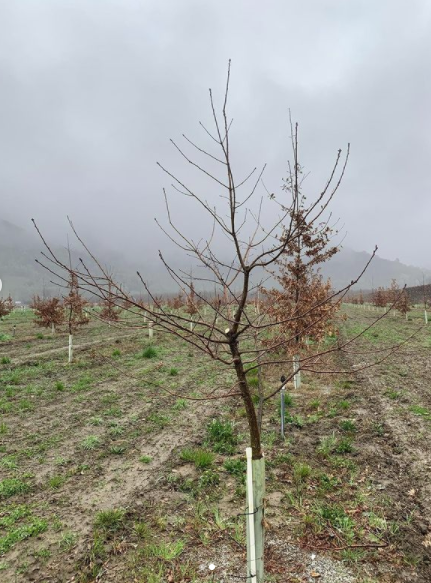
Example of before and after pruning of a 3 year old tree
Also see a series of short videos posted on our Instagram on the pruning of a multi trunk individual (make sure your turn on the sound).
::Welcome to the forum Mel. Let me copy here the answer I gave you on email.
To my knowledge we don’t have members from Alabama, but we do have members in Mississippi, Tennessee and Georgia, so I would assume that you could probably grow truffles in Alabama. There are many different truffle species to consider and my understanding is that the Pecan Truffles are endemic to your region.
::I would say it depends on the species of trees. Oak trees are tapped root so they would be difficult to transplant without major damage to the root system. The other consideration is that you want to transplants the tree root tips which host the truffle, and those would most likely stay behind in the digging process. I think you would probably better off replanting a 1-2 year old tree. This is what we are doing for our “gophered” trees.
::We have been considering converting our pruning material into biochar and bringing it back into the orchard through innoculation. We are not sure if it will be “doable” because of the amount of work involved.
The Kon-Tiki biochar kilns look very promising, have anyone try it?
-
AuthorPosts

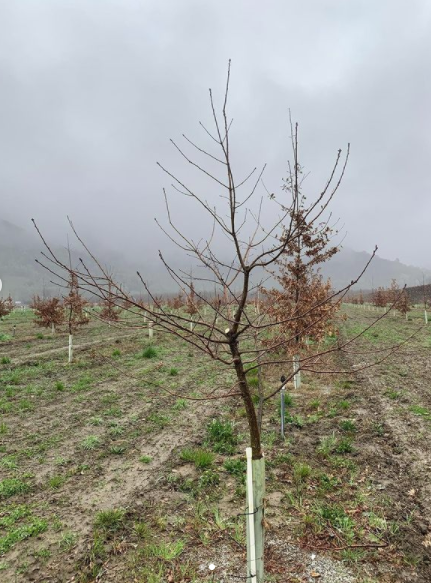
23 comments
Wendy Snow
Hi,
I’m trying to view the 2021 fall congress report, but it won’t load.
“Error loading pdf”
Fabrice Caporal
Thank you for bringing this to our attention. It is now fixed.
Fran Angerer
What was the outcome of this grant?
Staci O'Toole
Hi Fran.
If you click on the title it will take you to the details regarding the grant and it’s outcome.
The Primaries were Jeannine Davis and Inga Meadows. Although the research task force was not established yet there is quite a bit of information and details. If I remember correctly it helped establish their lab at NC State
Paul Beckman
Extremely well done. One of the issues that is confusing is that when Mark and I took soil samples on my Bianchette orchard. Both years the soil probe went through mature truffles in November. 100 percent truffle present. My guess is that soil samples should only be done in June This was caused by funding limitations at the time that affected our schedule.. Another area that needs to be explored is the multiple tubers in one sample. We were trying to get Western Labs Parma Idaho to develop this but timing didn’t work out. They can test for 6 nematode types in each sample. Only needs a tablespoon of soil. Seemed like reasonable way to test a lot of orchards.
Fabrice Caporal
A nice problem to have, too many truffles!
Alex Poole
Great overview
Holly Martin
Would have been nice to have an end time on Sunday for booking travel
Jeffrey Coker
1. This proposal is almost verbatim the UNECE Standard FFV-53 with some added (somewhat complicating) language about the percentages of classes that can be exposed by trimming and a couple of other things. Why not just endorse the UNECE standards and prevent the confusion of having yet another set of standards? [In our case at Burwell Farms, we are also being inspected by the state of NC and following both state and USDA food safety and packaging rules.]
2. The stated purpose of the proposal is to “standardize the quality requirements for use of the NATGA logo”. Is logo use currently a problem? Are we talking about use of the NATGA logo only on food packaging, or also on grower websites? If a grower chooses not to use NATGA’s class system, then should they remove the NATGA logo from all their materials?
Holly Martin
Species: Since both T. Gibbosum and T. Oregonense are described as Oregon White Truffle, it might be useful to include seasonal designation, i.e. Oregon White Truffle (Spring) for T. Gibbosum and Oregon White Truffle (Winter) for T. Oregonense.
II.C (iv): This is just a drafting suggestion. I found the second sentence, as organized, a little hard to follow. My suggested text has all the same information, just reorganized: Provided the truffles retain their essential characteristics as regards the quality, the keep quality and presentation, the following defects may be allowed: defects in shape, defects in development, defects in coloring, superficial bruising, and slight superficial damages caused by pests.
Over all, nice job and thanks for all the good work!
Karen Passafaro
I would add a few pictures of what you are recommending with packaging and labels
Fabrice Caporal
I like the Identification requirement. Now do those classification apply to a member of NATGA importing and reselling truffles? What then should be done with identification?
Fabrice Caporal
I never heard of the Icon class, interesting
Fabrice Caporal
Weight and shape characterizations do not apply uniformly across species. It looks like the document is centered around T. melanosporum. It would be a great challenge to find a 300g oregon truffle… another example is that Tuber magnatum is rarely round.
Fabrice Caporal
In Definition of Produce we say “species of the the genus Tuber” yet in the list of truffles below we proceed to include Oregon truffles which are not of the Tuber genus. I would be in favor of changing the definition of truffle to say what is in Wikipedia:
Or if we want to be less scientific we could say:
Fabrice Caporal
Note: From time to time the sound of this video is distorted for a few seconds at a time. This is a problem with the original recording and is not a problem with your system. Thank you for your understanding.
Fabrice Caporal
Please use the dedicated forum to discuss and ask questions about this webinar.
Bryan Denig
Such a great webinar from Christine. I am very appreciative that the webinar recordings are being posted for those of us who are interested but unable to attend live. Looking forward to the others!
Raymond and Bernadine Prince
please put Raymond on your list of participants for the Webinar
Fabrice Caporal
Thank you for your comment. You now can now register to the webinar using this link: https://us02web.zoom.us/webinar/register/5815946801873/WN_AfzFkTZmRxioFHhLKDk9qQ
Fabrice Caporal
Feel Free to submit questions or comments about this webinar using the comment feature of this page.
Fabrice Caporal
Feel Free to submit questions or comments about this webinar using the comment feature of this page.